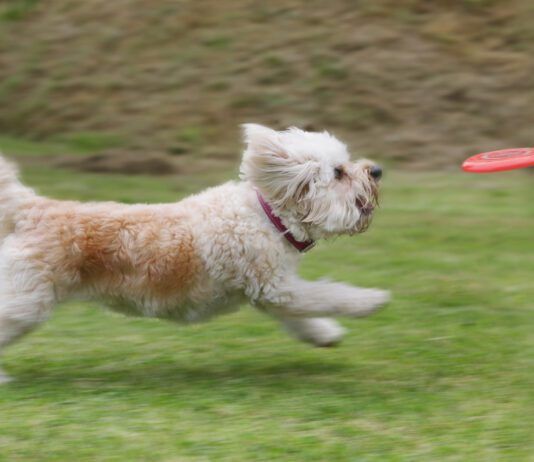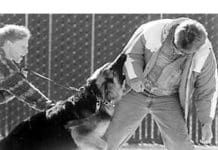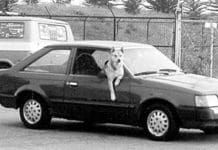Taking Measures to Prevent Separation Anxiety Related Behaviors
Separation anxiety (SA) stems from a dog's natural survival instinct to stay in close proximity to the pack. In the wild, a canine who is left alone is more likely to die, either from starvation, since he has no pack to hunt with, or from attack, since he has no pack mates for mutual protection. Given the vital importance of a dog's canine companions, it speaks volumes about their adaptability as a species that we can condition them to accept being left alone at all! We're lucky we don't have far more SA problems than we do, especially in today's world, where few households have someone at home regularly during the day to keep the dog company.
Quiet Barking in Your Neighborhood
Probably the most common complaint about dogs is the noise they make. The good news for neighbors is that usually problems can be resolved without resorting to legal means, through informal negotiation or mediation. And if that fails, there is almost always a law against noisy nuisance dogs. If you can't get these laws enforced to your satisfaction, you can sue the dog owner to get the nuisance stopped and to recover money damages. But substituting a major hassle with expensive lawyers for a small one with a bad-mannered spaniel isn't much progress. Lawsuits are especially undesirable when the other party is a neighbor after all, you'll still be next door to each other no matter who wins.
Understand Your Dog’s Ancestral Instincts
when they were only acting on instinct without effective guidance toward acceptable behavior.üShy puppies should be exposed to a wide variety of situations, places, people and dogs to build confidence.üMost dogs signal an intent to bite before they do; most bites occur because someone misreads or ignores the dog's warning signs.
A Dog’s Calming Signals
Pups who are raised in a litter for the first eight weeks of their lives (and in the presence of older dogs) have the advantage of learning skills from their siblings and elders. They learn to accept the leadership of a just leader. They learn simple, but crucially important lessons such as bite inhibition. They come to understand when play is too rough or inappropriate. And they have the opportunity to learn the language skills that will enable them to be peaceful pack members.
A Dog Who Is Always Hungry
We adopted our rescue dog about a year ago. She had been a stray, and at the time we adopted her the vet thought she was about ten months old. Ever since we’ve had her she has had the same symptoms – she doesn’t seem to be able to properly digest her food. She is ravenously hungry all the time. She will eat unlimited amounts of anything – fruits, vegetables, yogurt, bread, anything she can get her paws on. And her stools are not normal; she has about four bowel movements per day, and they get progressively softer throughout the day.
Is Your Dog Hiding a Talent?
All of our dogs are capable of far more than we ever ask of them. Their senses, especially their hearing and ability to smell, are so highly developed that they can perform feats that appear miraculous to us. Their physical abilities can cause us to gape in awe, as demonstrated by the prowess of highly-skilled Frisbee and Agility dogs. And they have all kinds of talents that, unless we look for them, we may never notice; hidden talents that reveal their versatility and breadth of their potential to think, reason and learn.
Out For Blood
If your dogs are fighting, and are causing severe damage to each other – or one dog is causing severe damage to another – I’m sorry to say that you are dealing with the most difficult of all canine behavior problems, the one with the worst possible prognosis. Your options are extremely limited, because the treatment really should have happened when the dog was 4 1/2 months old, which is when dogs normally learn bite inhibition.
Pros and Cons of Electric Underground Fences
Electronic fences and their partners collars that deliver an aversive agent have been around for more than 20 years. They seem like the perfect canine confinement alternative to a solid physical fence. They are often marketed as the ideal fencing solution to homeowner association fence prohibitions and for problematic, difficult-to-fence, steep, rocky and rugged living spaces. But while occurrences of a collar shorting out and administering repeated shocks to a hapless, helpless dog are relatively rare, there are other drawbacks to using electronic fencing systems. A conscientious owner will weigh all the pros and cons before deciding whether or not to invest in this sort of fencing" system. "
Be Cautious While Tying Your Dog in the Backyard
I was trying to be a responsible dog owner. We lived in a rural area of Northern California, in a house with no fenced yard. My boyfriend's Irish Setter had recently been shot and killed while chasing a neighbor's goats. A hard lesson to learn, and one I wasn't about to repeat. So when we were leaving the ranch for a day I insisted we tie up our recently acquired St. Bernard, Bear. We tied him to a tree, made sure he had access to plenty of water and shade and was nowhere near a fence that he could climb over. Confident that we had done the right thing, we drove off.
Dogs With An Unhealthy Fear of Storms and Loud Noises
Many behaviorists and dog trainers believe that puppies go through a so-called fear imprinting" period sometime between the ages of eight to 20 weeks
Rottie “Racism”?
People fear Rottweilers for a variety of reasons, and only a few of those reasons are due to the media. Some Rottie owners deliberately foster the intimidating look, fastening huge Gothic collars on their dogs and encouraging their dogs to be aggressive. Many Rottweilers are used for guard and protection work, a task they were bred for and excel at. And, face it, whether you want to blame nature or nurture (poor breeding or wrong-headed training), there are a certain number of aggressive, unpredictable, dangerous Rottweilers in the world.
Canine Road Rage
at least until the NILIF program has had a chance to take effect. If he jumps into the car and immediately takes up his position at the steering wheel















